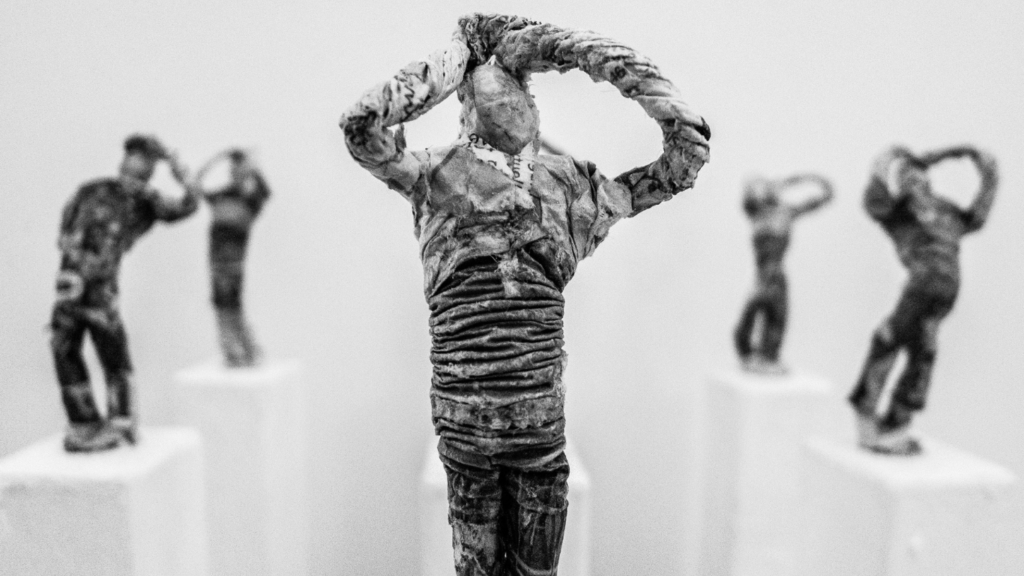As an art enthusiast, I’ve witnessed a fascinating shift in the world of sculpture towards embracing environmental themes. In contemporary sculpture, artists are not only shaping clay and stone but also reshaping our perceptions of nature, sustainability, and the urgent need for environmental conservation. These sculptures serve as powerful visual narratives, prompting viewers to reflect on the delicate balance between humanity and the natural world.
Through the use of recycled materials, organic forms, and thought-provoking concepts, sculptors are creating pieces that not only captivate the eye but also raise awareness about pressing environmental issues. The marriage of art and environmental consciousness in contemporary sculpture is a testament to the power of creativity in sparking conversations and inspiring change. In this article, we’ll delve deeper into the profound impact of environmental themes in shaping the landscape of modern sculptural art.
Exploring the Impact of Environmental Themes in Contemporary Sculpture
When considering the Evolution of Environmental Concerns in Sculpture, it’s evident that modern sculptors have shifted towards incorporating ecological elements in their artworks. These artists are not just creators but also advocates for sustainability and environmental awareness. The use of recycled materials and nature-inspired designs reflects a growing consciousness about the need to address pressing environmental issues through art.
In looking at Key Artists and Their Contributions to environmental themes in contemporary sculpture, individuals like Andy Goldsworthy stand out for their innovative approach. Goldsworthy’s site-specific installations using natural materials emphasize the interconnectedness between art and the environment, inviting viewers to contemplate humanity’s relationship with nature. Similarly, Ursula von Rydingsvard’s large-scale wooden sculptures echo organic forms found in nature, demonstrating a profound connection to the earth and encouraging introspection on our impact on the natural world. These artists and many others are reshaping the sculptural landscape by infusing it with ecological narratives that provoke dialogue and inspire change.
Artistic Techniques Highlighting Environmental Issues
In contemporary sculpture, artists employ various artistic techniques to shine a spotlight on environmental concerns. By utilizing innovative materials and methods, as well as incorporating symbolic representations in their sculptures, they convey powerful messages about sustainability and ecological awareness.
Materials and Methods
In their quest to address environmental issues through sculpture, artists often opt for unconventional materials. For instance, some sculptors repurpose discarded items like plastic bottles, metal scraps, or driftwood to create their artwork. By using these materials, artists not only reduce waste but also draw attention to the impact of human consumption on the environment. Additionally, many sculptors adopt sustainable methods in their practice, such as eco-friendly production processes and the use of renewable energy sources in their studios. These approaches not only align with their artistic vision but also serve as a testament to their commitment to environmental conservation.
Symbolic Representation in Sculpture
Symbolism plays a crucial role in conveying the complex relationship between humans and nature in contemporary sculpture. Artists often rely on symbolic representations, such as intertwining vines or entangled roots, to depict the interconnectedness of all living beings and the environment. Through these symbolic elements, sculptors communicate themes of unity, growth, and resilience in the face of environmental challenges. By infusing their sculptures with symbolic meaning, artists urge viewers to reflect on their own relationship with the natural world and contemplate the impact of their actions on the planet.
Public and Critical Reception
In examining the impact of environmental themes in contemporary sculpture, it’s crucial to consider how these artworks are perceived both by the public and art critics. Here, I delve into the responses from the media and critiques from the art world, as well as how these sculptures interact with communities through public installations and engagement efforts.
Media Responses and Art Critiques
When contemporary sculptors incorporate environmental elements into their work, media responses and art critiques play a significant role in shaping the perception of these pieces. The media often acts as a bridge between artists and the public, highlighting the innovative use of materials, the message behind the artwork, and the artist’s contribution to the environmental discourse. Art critiques, on the other hand, provide in-depth analysis and evaluation of the aesthetic, conceptual, and technical aspects of the sculptures, offering valuable insights into the artistic merit and impact of the environmental themes portrayed.
Public Installations and Community Engagement

Beyond galleries and museums, public installations of environmentally themed sculptures bring art directly into the urban and natural landscapes, allowing communities to interact with and experience the artwork in their daily lives. These installations not only beautify public spaces but also serve as catalysts for discussions on environmental conservation and sustainability. Through community engagement initiatives such as workshops, artist talks, and interactive events, sculptors can further involve the public in understanding the significance of their work and inspire collective action towards environmental stewardship.
Case Studies of Influential Environmental Sculptures
Exploring notable environmental sculptures can provide valuable insights into the impact of art on environmental awareness and sustainability efforts. Let’s delve into some significant works and their locations as well as analyze the impact and public interaction associated with them.
Significant Works and Their Locations
- “Waste Not” by Song Dong – Beijing, China: This installation art piece comprised thousands of objects collected by the artist’s mother over five decades, highlighting themes of consumerism and waste.
- “Cloud Gate” by Anish Kapoor – Chicago, United States: Situated in Millennium Park, this iconic stainless-steel sculpture reflects the city’s skyline and engages visitors through its distorted reflections.
- “Broken Circle/Spiral Hill” by Robert Smithson – Emmen, Netherlands: Created in a sand quarry, this earthwork sculpture integrates natural and industrial elements, emphasizing the impact of human intervention on landscapes.
- Educational Value: Environmental sculptures serve as educational tools, raising awareness about ecological issues and encouraging dialogue on sustainability practices.
- Community Engagement: Public interaction with these artworks fosters a sense of community involvement, sparking conversations and actions towards environmental preservation.
- Aesthetic Appreciation: Beyond their environmental messages, these sculptures evoke aesthetic appreciation, blending art and nature to create harmonious landscapes.
Exploring these influential environmental sculptures showcases the power of art in advocating for environmental consciousness and fostering public dialogue on sustainability.

 Karen Parker is a vital member of the Sculpture Creation Tips team, where her profound love for the art of sculpting is evident in every piece she works on. With years of experience and a deep understanding of various sculpting techniques, Karen has become a trusted mentor to both beginners and seasoned artists alike. Her dedication to the craft is matched only by her passion for teaching, as she creates detailed, easy-to-follow tutorials that help others bring their artistic visions to life. Karen's expertise spans a wide range of materials and styles, allowing her to offer invaluable insights that cater to a diverse audience. Whether through her hands-on guidance or her thoughtful advice, Karen's contributions are instrumental in nurturing a vibrant and supportive community of sculptors, all united by a shared love for this timeless art form.
Karen Parker is a vital member of the Sculpture Creation Tips team, where her profound love for the art of sculpting is evident in every piece she works on. With years of experience and a deep understanding of various sculpting techniques, Karen has become a trusted mentor to both beginners and seasoned artists alike. Her dedication to the craft is matched only by her passion for teaching, as she creates detailed, easy-to-follow tutorials that help others bring their artistic visions to life. Karen's expertise spans a wide range of materials and styles, allowing her to offer invaluable insights that cater to a diverse audience. Whether through her hands-on guidance or her thoughtful advice, Karen's contributions are instrumental in nurturing a vibrant and supportive community of sculptors, all united by a shared love for this timeless art form.
